Did you know that when babies are born, their least developed sense is vision? Mother nature has given newborns everything they need for their survival, they even come with inbuilt reflexes to help them. Shame they don’t come with an instruction manual! What apparently they don’t need as much in their first days on Earth is to see their surroundings well. What happens to babies’ visual development? Fear not, with the help of this guide you can easily help them in this developmental area as well.
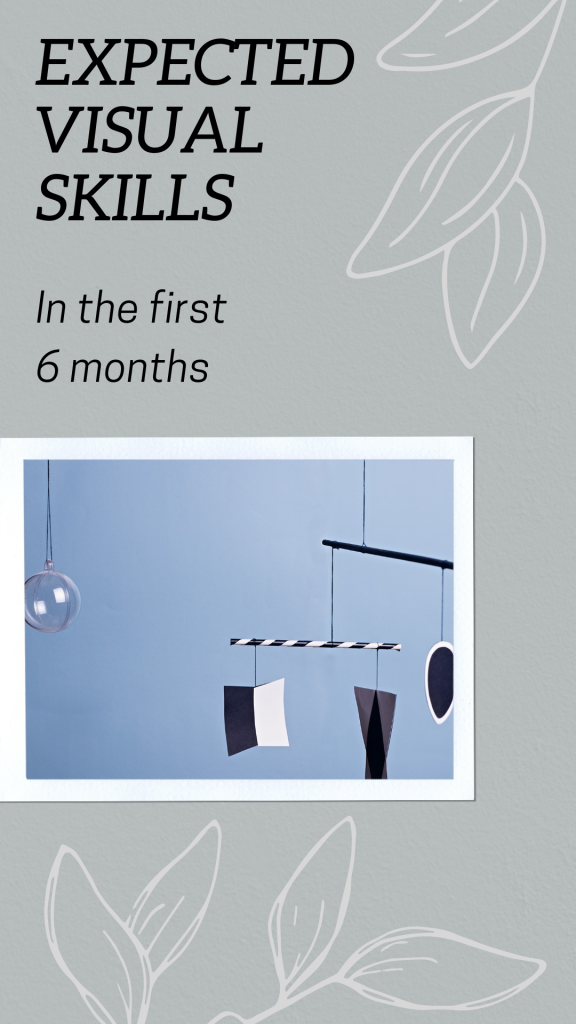
NEWBORN BABIES
Thanks to evolution, all five senses babies are born with are just developed enough to help them stay alive. To even out the odds a bit, Mother nature also threw in some body reflexes as well. When you give birth, checking that these are functional are amongst the first things doctors do to your newborn. Here’s a handy guide that you can use to check that all reflexes are in order. (If you notice that one of them doesn’t ‘work’, please check with your paediatrician.) But what happens to their vision? Can they see anything at all? They can, but not much.
What are the expected visual skills?
- they can perceive shapes, movement and the difference between light and darkness
- at this age they are very short-sighted, they can see to about 30cm distance, which is approximately the same as the mother’s face from a nursing baby’s eyes.
- everything they see over 30cm is very blurry
- Their eyes haven’t learned to move together yet, therefore sometimes they look cross-eyed
- they turn towards sources of light
- their eyes and the head move together
- they blink when a camera flashes in their face
How can you help babies’ visual development?
When you talk to your baby, keep their face close to yours so they can see you clearly. You can start offering them black-and white, high-contrast cards that they will momentarily gaze at. In this post there are a couple of free download options. For more black and white resources, read this post.
The Montessori mobile that is designed for this phase of the babies’ visual development is the Munari mobile.
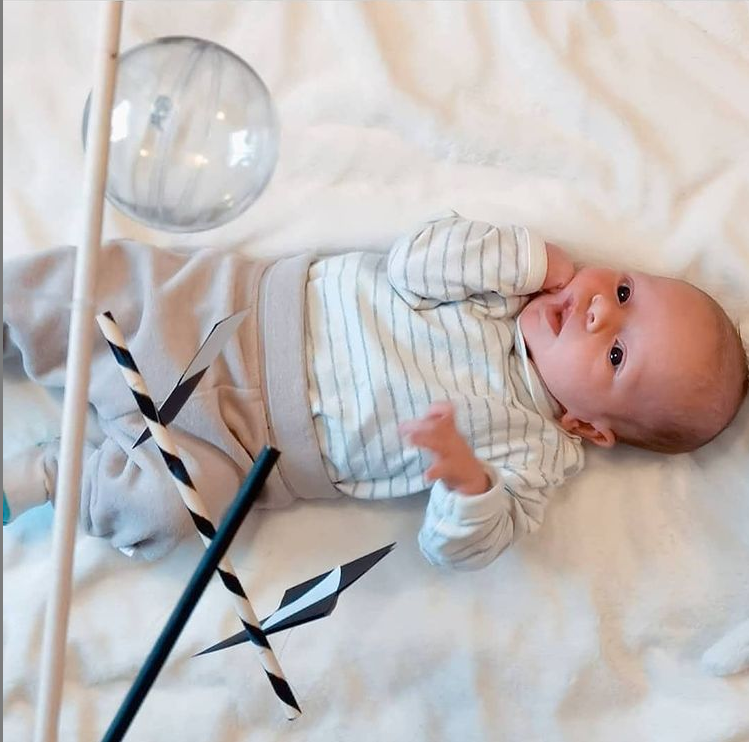
Fun fact: NOT all babies are born with blue eyes! Read more about this surprising fact in this article.
1-2 MONTHS OLD BABIES
In just four weeks your baby has grown, not only physically but has also learnt an incredible amount! Neurons have been busy connecting in the brain and their vision has also developed a great deal.
What are the expected visual skills?
- your baby can see a bit further and images are less blurry
- their eyes are starting to work together (binocularity), however there are still instances when they look cross-eyed
- the eyes start to move in a wider trajectory
- they are starting to visually track slowly moving objects or people
- strong colours are becoming more apparent, such as the primary colours
How can you help your baby’s development?
Hold your baby in front of you. Move slowly from side to side, holding their gaze. You can do this with black and white baby books or objects in the primary colours.
The Montessori mobile that is designed for this age is the Octahedron mobile.
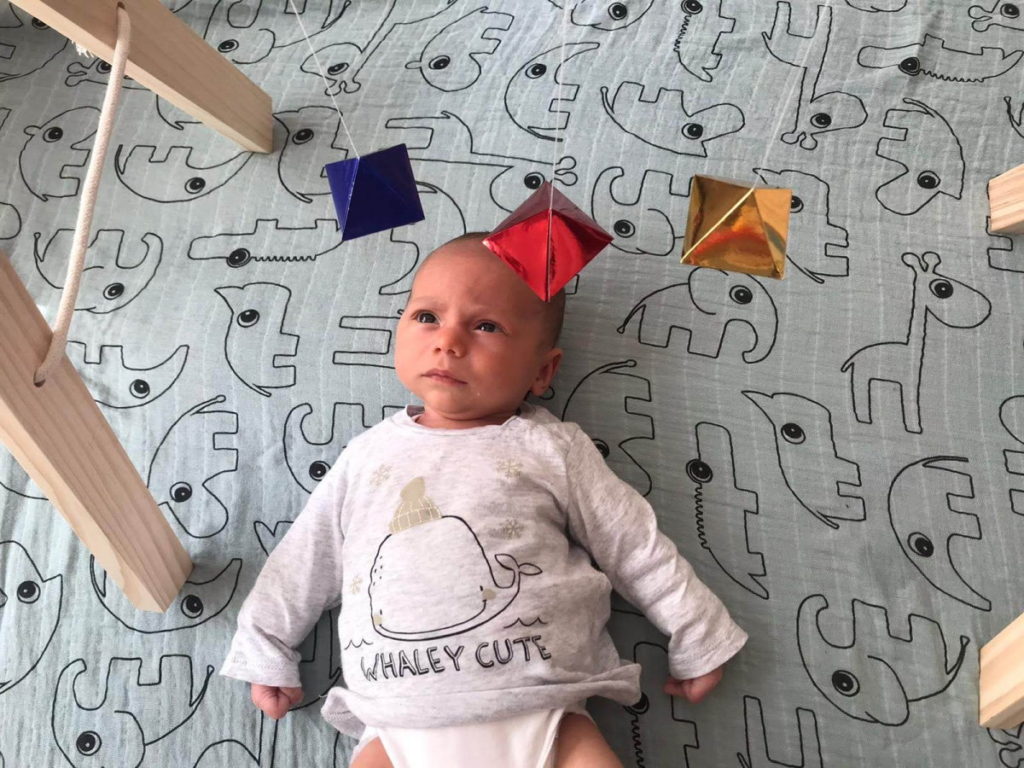
2-3 MONTHS OLD BABIES
The world slowly starts to open up to your baby. Things become sharper, they can perceive more details and even more colours brighten up their life!
What are the expected visual skills?
- babies can perceive more colours and start to work on colour differentiation
- they are able to distinguish the different shades of one colour
- the distance which they can see is getting longer
- your face becomes clearer and more focused
- babies watch you more intently while you speak to them
- they are able to gaze at an object for a longer period of time
- their eyes are working together
How can you help your baby’s development?
Find two objects in the same colour and show them to your baby. Watch how long they gaze at each. Whichever they look at for longer, they like better. Some people use this experiment to ask babies to choose their clothes. They show them two outfits and determine their baby’s preference by the length of their stare.
By this age the neck muscles are getting stronger, too. Put your baby on a blanket and, looking at their eyes, lie down on one side of their head. Wait until they turn their head to follow you. Wait a few seconds then slowly move to the other side, keeping eye contact as long as you can.
The Montessori mobile that is designed for this phase of babies’ visual development is the Gobbi.
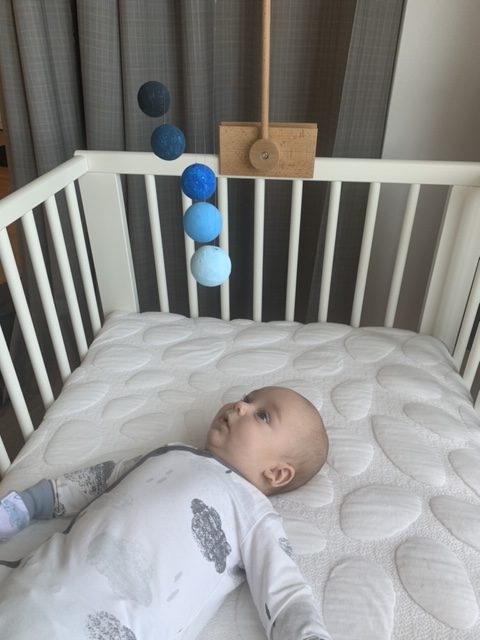
3 – 4 MONTHS OLD BABIES
There are huge developmental leaps at this age! Many people call the first three months the 4th trimester as the mother and baby are so inseparable. Your baby starts to show more and more of their personality, their likes and dislikes and start smiling at you.
What are the expected visual skills?
- babies start to focus on objects for a longer period of time. Some babies are happy to observe their Montessori mobiles for 20-30 minutes at a time!
- their ability to track the trajectory of moving objects is getting better and better
- they can move their eyes without moving their head
- the images they see are still slightly blurry
- babies start to work on perceiving depth
- slowly they start to discover their hands
- their interest slowly moves from visual to physical: they start to reach and bat
How can you help your baby’s development?
Extend the previously described game by using objects and putting them around your baby in different places, such as next to their head, above their head etc. If they are starting to roll, you can use their favourite objects to motivate them to do so.
Having a side-lying, full-length mirror in the room helps babies to look around the room and see not only the environment but also how their body moves. Read about a Montessori baby’s work space in this blog.
The Montessori mobiles that are designed for this age are:
Visual: the Dancers mobile
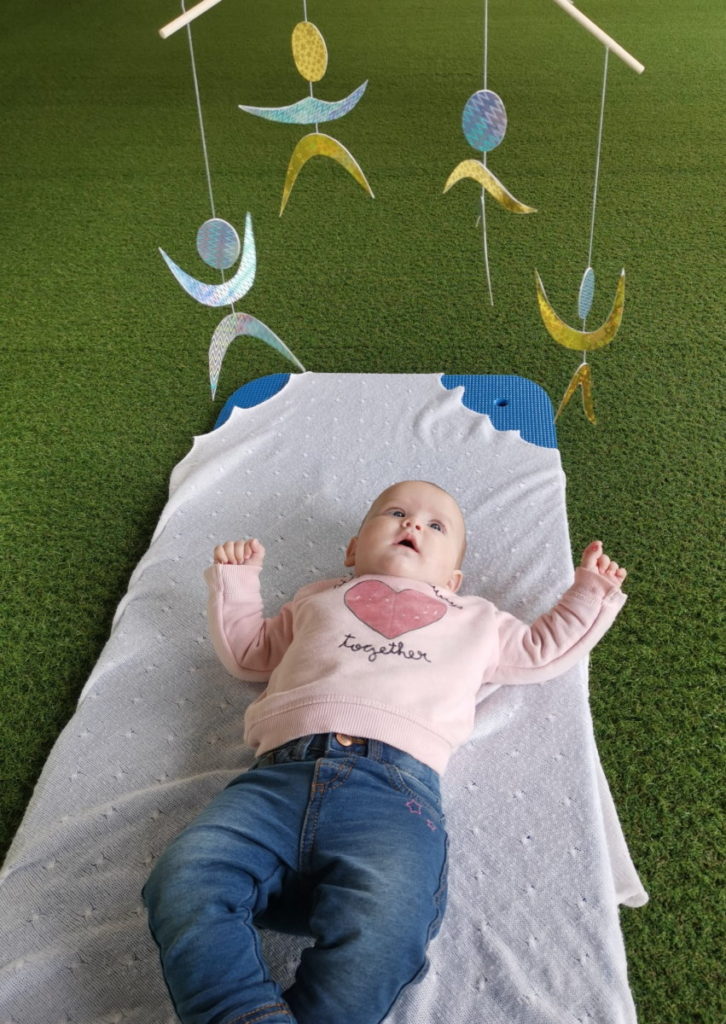
Tactile mobiles: the DIY Montessori Gobbi mobile:
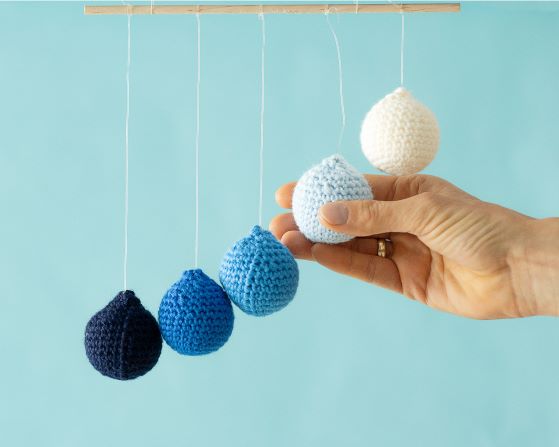
The Basic set of Montessori Tactile mobiles
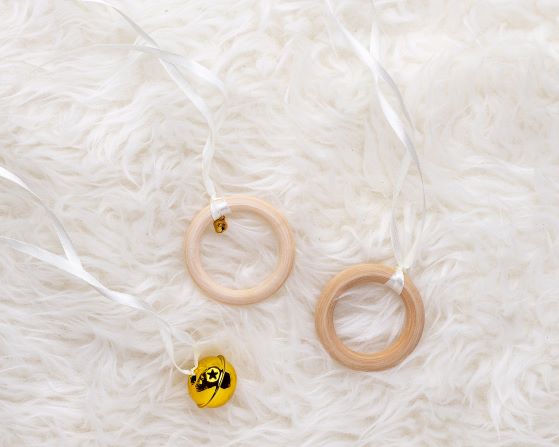
5-6 MONTHS OLD BABIES
By this age babies’ visual development has progressed to enough to more or less master all basic visual skills, such as the two eyes working together, moving from two dimensional objects to three, tracking moving objects, differentiating colours and distinguishing different shades, working on depth perception etc. Their vision is almost as good as an adults’! From now on they are going to work on using all these separately learned skills at the same time to refine their vision.
They are getting better and better with their hands as well. From reaching and batting they are now moving to grabbing, pulling and holding objects for an extended period of time.
How can you help your baby’s development?
This is a very sensorial time in babies’ life. You can help their development by offering interesting objects from their environment such as a stone that has an interesting shape, a spoon or a small comb. Always stay with them when they observe these.
You can make up mobiles and hang them above your baby using a variety of objects in the house, such as ribbons or leaves you find in the garden. Hang objects from an elastic ribbon (I used hair ties for this) so your baby can practice pulling.
Spend some time outside where your baby can practice looking at things at a longer distance.
The Montessori mobiles that are designed for this age are:
Visual mobiles: the Montessori Animal Mobiles.
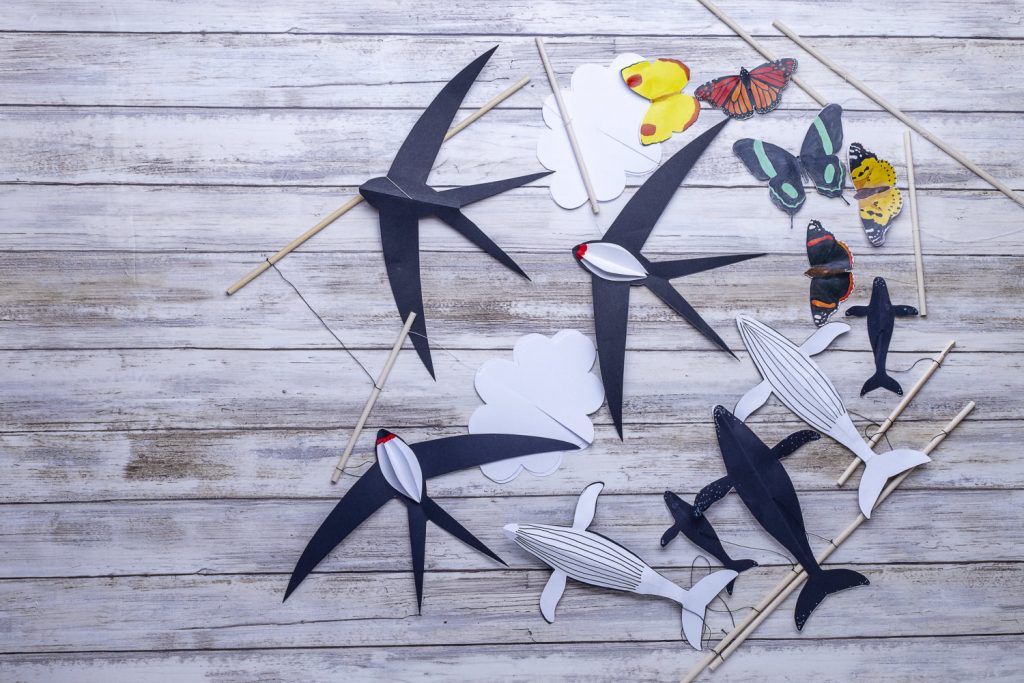
Tactile mobiles: the Grasping Beads, the Puzzle Ball and the Montessori Bell Rattle.
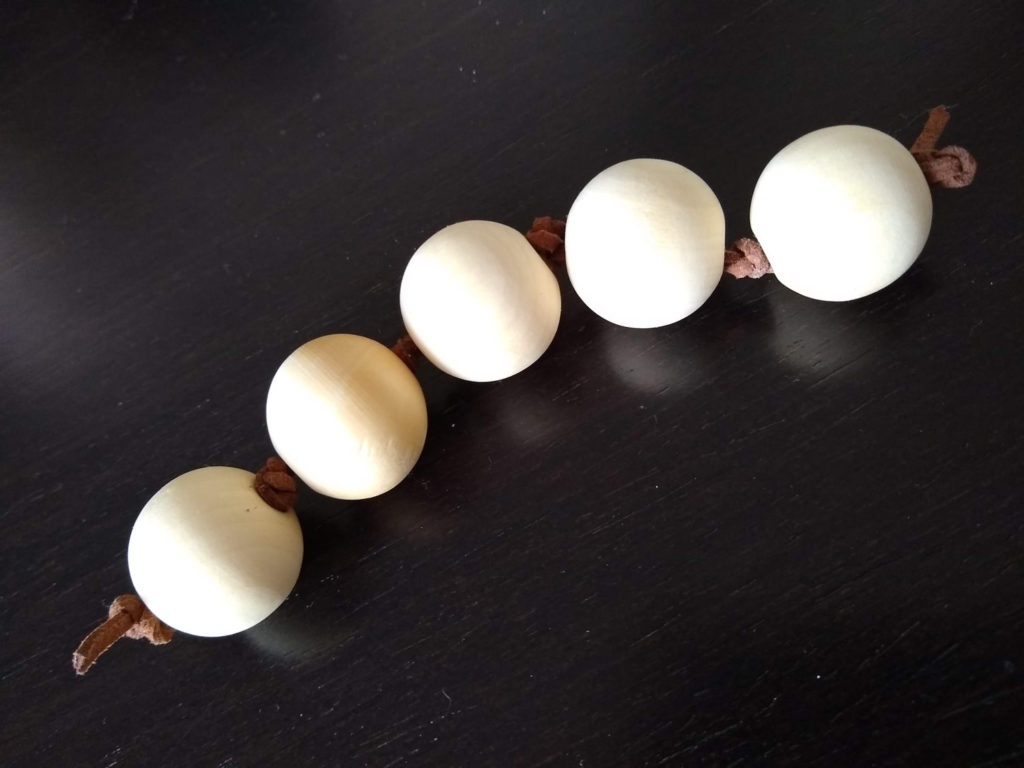

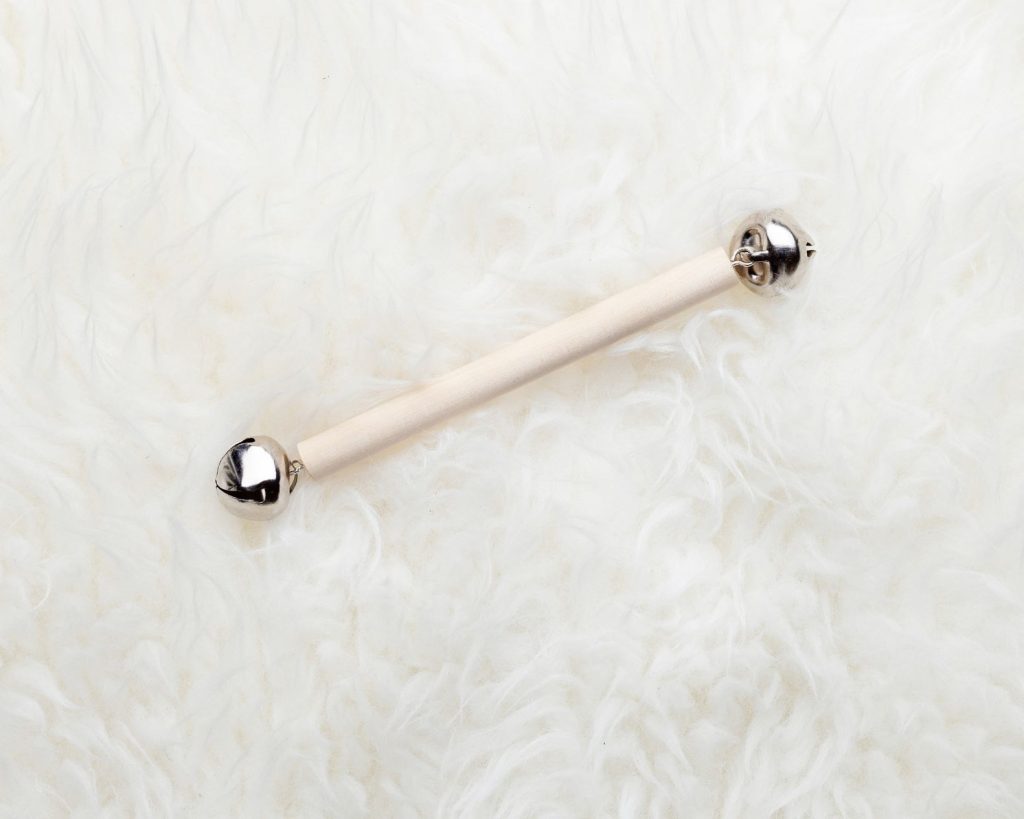
ALL-ROUND DEVELOPMENT
Even though the main focus of the post was baby vision development, as you could see from this post, we can’t separate it from your little one’s all-round progress. Everything is connected and all developmental areas aid and support each other.
While there are approximate ages given for each developmental level, we must not forget that every baby is different and they all progress at their own pace. If your baby was premature, for example, you need to be aware that she might need some time to catch up with his/her full-time peers. Nevertheless, if you notice that your little one is not progressing according to these time frames, please double check your observations with your baby’s paediatrician.
FINAL THOUGHTS
Isn’t it incredible to learn about baby vision development? From hardly seeing more then light and darkness, newborns learn to see almost as well as an adult just in half a year! This is a process that is continuous and with the right tools and little games you can give a helping hand, too. Delight with your baby and watch how the world opens up for her, day by day. And if you wonder about the differences between simple, natural Montessori materials and the modern, high-tech baby toys, head over to this post.
All the above mentioned mobiles are very easy to DIY, you might even have everything you need in your house! If you’d like to buy all the resources for them in one place, take a look at my Shop.
Click here to read more about how the Montessori Visual Mobiles, the Montessori Tactile Mobiles or the Sensory Baby Toys help your baby’s development.
Reference: Montivision
